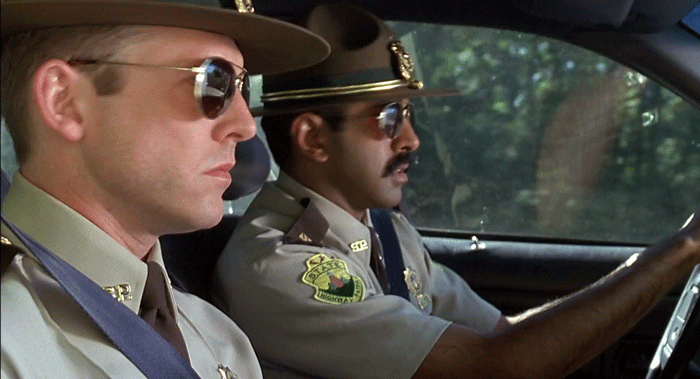[FNZ] Role Madness Policy Academy Crazy Quadrupoley Insanity Dethy Parity Bastarady Mafiay
- Thread starter EkkoLoJinx
- Start date
- Tags ekko is a bad host ekko is a good host
- Status
- Not open for further replies.
More options
Who Replied?
sure
As for what I was saying, let me use an example with 4 players - A, B, C, D.
A is Mafia. Sane Cop.
B is Town. Insane Cop.
C is Town. Naive Cop.
D is Town. Paranoid Cop.
Then we have the players E, F, G and H.
E is Mafia. Naive Cop.
F is Town. Paranoid Cop.
G is Town. Insane Cop.
H is Town. Sane Cop.
A targets F = Innocent
B targets A = Innocent
C targets H = Innocent
D targets F = Guilty
E targets G = Innocent
F targets G = Guilty
G targets C = Guilty
H targets A = Guilty
-B protects A
-D kills F
-H kills A
F dies. Now here, what we do is assume two states - one where the killed player is Innocent (α) and one where the killed player was Guilty (β).
A and D targeted F, and can report their results.
(F) States -
α - A is Sane/Naive. D is Insane/Paranoid.
Because F died, we know that if A is Sane, D must be Paranoid. If A is Naive, D must be Insane.
β - A is Insane/Naive. D is Sane/Paranoid.
Because F died, we know that is A is Insane, D must be Paranoid. If A is Naive, D must be Sane.
We can't go any further with just that information. But in terms of classification, we're left with:
A must be Sane/Insane/Naive
D must be Sane/Insane/Paranoid
And then we go through the rest of the results. We need to keep the α and β scenarios seperate so that we can then begin to eliminate possibilities as to what cop they are. Once we're down to 1, we'll be able to say whether F was Town or Mafia.
We log all the results like that, lynch informative ones or discrepancies, and move to the next one.
As for what I was saying, let me use an example with 4 players - A, B, C, D.
A is Mafia. Sane Cop.
B is Town. Insane Cop.
C is Town. Naive Cop.
D is Town. Paranoid Cop.
Then we have the players E, F, G and H.
E is Mafia. Naive Cop.
F is Town. Paranoid Cop.
G is Town. Insane Cop.
H is Town. Sane Cop.
A targets F = Innocent
B targets A = Innocent
C targets H = Innocent
D targets F = Guilty
E targets G = Innocent
F targets G = Guilty
G targets C = Guilty
H targets A = Guilty
-B protects A
-D kills F
-H kills A
F dies. Now here, what we do is assume two states - one where the killed player is Innocent (α) and one where the killed player was Guilty (β).
A and D targeted F, and can report their results.
(F) States -
α - A is Sane/Naive. D is Insane/Paranoid.
Because F died, we know that if A is Sane, D must be Paranoid. If A is Naive, D must be Insane.
β - A is Insane/Naive. D is Sane/Paranoid.
Because F died, we know that is A is Insane, D must be Paranoid. If A is Naive, D must be Sane.
We can't go any further with just that information. But in terms of classification, we're left with:
A must be Sane/Insane/Naive
D must be Sane/Insane/Paranoid
And then we go through the rest of the results. We need to keep the α and β scenarios seperate so that we can then begin to eliminate possibilities as to what cop they are. Once we're down to 1, we'll be able to say whether F was Town or Mafia.
We log all the results like that, lynch informative ones or discrepancies, and move to the next one.
I'm not sure that I really understand.
But my impression is if we keep track of who targets who and the results that people get we'll at least get some semblance of solving going on instead of lynching 100% blind.
sure
As for what I was saying, let me use an example with 4 players - A, B, C, D.
A is Mafia. Sane Cop.
B is Town. Insane Cop.
C is Town. Naive Cop.
D is Town. Paranoid Cop.
Then we have the players E, F, G and H.
E is Mafia. Naive Cop.
F is Town. Paranoid Cop.
G is Town. Insane Cop.
H is Town. Sane Cop.
A targets F = Innocent
B targets A = Innocent
C targets H = Innocent
D targets F = Guilty
E targets G = Innocent
F targets G = Guilty
G targets C = Guilty
H targets A = Guilty
-B protects A
-D kills F
-H kills A
F dies. Now here, what we do is assume two states - one where the killed player is Innocent (α) and one where the killed player was Guilty (β).
A and D targeted F, and can report their results.
(F) States -
α - A is Sane/Naive. D is Insane/Paranoid.
Because F died, we know that if A is Sane, D must be Paranoid. If A is Naive, D must be Insane.
β - A is Insane/Naive. D is Sane/Paranoid.
Because F died, we know that is A is Insane, D must be Paranoid. If A is Naive, D must be Sane.
We can't go any further with just that information. But in terms of classification, we're left with:
A must be Sane/Insane/Naive
D must be Sane/Insane/Paranoid
And then we go through the rest of the results. We need to keep the α and β scenarios seperate so that we can then begin to eliminate possibilities as to what cop they are. Once we're down to 1, we'll be able to say whether F was Town or Mafia.
We log all the results like that, lynch informative ones or discrepancies, and move to the next one.
As for what I was saying, let me use an example with 4 players - A, B, C, D.
A is Mafia. Sane Cop.
B is Town. Insane Cop.
C is Town. Naive Cop.
D is Town. Paranoid Cop.
Then we have the players E, F, G and H.
E is Mafia. Naive Cop.
F is Town. Paranoid Cop.
G is Town. Insane Cop.
H is Town. Sane Cop.
A targets F = Innocent
B targets A = Innocent
C targets H = Innocent
D targets F = Guilty
E targets G = Innocent
F targets G = Guilty
G targets C = Guilty
H targets A = Guilty
-B protects A
-D kills F
-H kills A
F dies. Now here, what we do is assume two states - one where the killed player is Innocent (α) and one where the killed player was Guilty (β).
A and D targeted F, and can report their results.
(F) States -
α - A is Sane/Naive. D is Insane/Paranoid.
Because F died, we know that if A is Sane, D must be Paranoid. If A is Naive, D must be Insane.
β - A is Insane/Naive. D is Sane/Paranoid.
Because F died, we know that is A is Insane, D must be Paranoid. If A is Naive, D must be Sane.
We can't go any further with just that information. But in terms of classification, we're left with:
A must be Sane/Insane/Naive
D must be Sane/Insane/Paranoid
And then we go through the rest of the results. We need to keep the α and β scenarios seperate so that we can then begin to eliminate possibilities as to what cop they are. Once we're down to 1, we'll be able to say whether F was Town or Mafia.
We log all the results like that, lynch informative ones or discrepancies, and move to the next one.
only problem we might run into is mafia and/or lyncherino lying about who they targeted or what results they got plus also lyncherino being able to switch what they scan as
Day 0 - Substitutions
Day 0 - Substitutions
@MUUGEN has subbed in for @Rej
@MitchMatch has subbed in for @Grammaton
do not discuss substitutions
@MUUGEN has subbed in for @Rej
@MitchMatch has subbed in for @Grammaton
do not discuss substitutions
I will give the new players an hour to select partners, after then they will be RNGed
1. @Xlaw
2. @Blue
3. @Rottkins
4. @Ariess
5. @Rej
6. @Ratchet
7. @Fujishiro
8. @RippedCal
9. @hime
10. @T-Pein™
11. @Grammaton
12. @Pot Goblin
13. @Kagurashii
14. @DoflaMihawk
15. @Peroroncino
16. @Phoenix D. King
2. @Blue
3. @Rottkins
4. @Ariess
5. @Rej
6. @Ratchet
7. @Fujishiro
8. @RippedCal
9. @hime
10. @T-Pein™
11. @Grammaton
12. @Pot Goblin
13. @Kagurashii
14. @DoflaMihawk
15. @Peroroncino
16. @Phoenix D. King
Day 0 - Substitutions
@MUUGEN has subbed in for @Rej
@MitchMatch has subbed in for @Grammaton
do not discuss substitutions
@MUUGEN has subbed in for @Rej
@MitchMatch has subbed in for @Grammaton
do not discuss substitutions
I will give the new players an hour to select partners, after then they will be RNGed
1. @Xlaw
2. @Blue
3. @Rottkins
4. @Ariess
5. @Rej
6. @Ratchet
7. @Fujishiro
8. @RippedCal
9. @hime
10. @T-Pein™
11. @Grammaton
12. @Pot Goblin
13. @Kagurashii
14. @DoflaMihawk
15. @Peroroncino
16. @Phoenix D. King
2. @Blue
3. @Rottkins
4. @Ariess
5. @Rej
6. @Ratchet
7. @Fujishiro
8. @RippedCal
9. @hime
10. @T-Pein™
11. @Grammaton
12. @Pot Goblin
13. @Kagurashii
14. @DoflaMihawk
15. @Peroroncino
16. @Phoenix D. King
- Status
- Not open for further replies.



